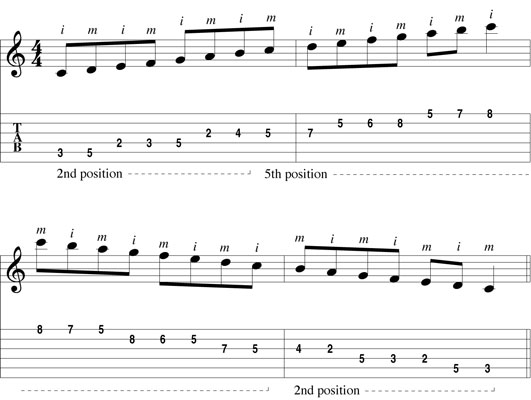Follow-through is just as important with plucking a guitar string as it is with golf or bowling. By controlling the way your finger follows through after plucking a string, you can learn to play the rest stroke, which is unique to classical guitar and is used for accentuating melody notes.
The rest stroke uses a different kind of follow-through from the free stroke. Instead of striking the string at a slightly upward angle, pluck straight across (not upward) so that your finger lands, or rests, against the adjacent lower-pitched string.
Coming straight across the string (instead of coming across at an upward angle) maximizes the sound produced by the string. That’s why rest strokes are good for melody notes; the melody notes are the prominent ones — the ones that you want to accentuate. The following figure, with its before and after pictures, shows how to play a rest stroke.

Use rest strokes to accentuate melody notes in a classical piece that includes inner voices — filler or background notes on the middle strings (played with free strokes) — and bass notes.
Now that you know how to produce a rest stroke, try your hand at the following exercise. Play the two-octave C major scale shown in the following figure slowly, using all rest strokes. Change from second to fifth position at the end of measure 1 by smoothly gliding your first finger along the 3rd string, up to the fifth fret. On the way down, shift back to second position by smoothly gliding your third finger along the 3rd string, down to the fourth fret. Alternate between i (index finger) and m (middle finger) as you go.

For the sake of speed and accuracy, alternating between two right-hand fingers (usually i and m) is customary for playing classical-guitar melodies.






